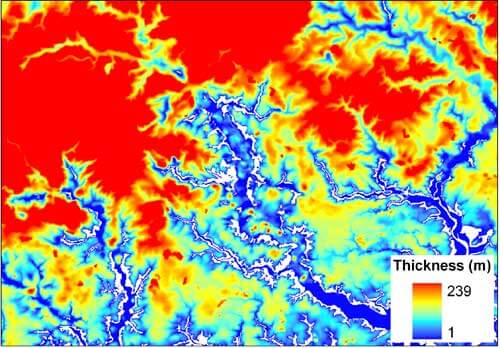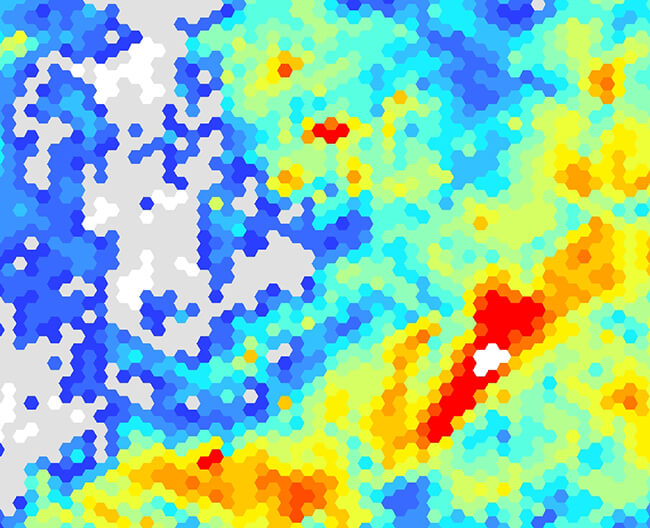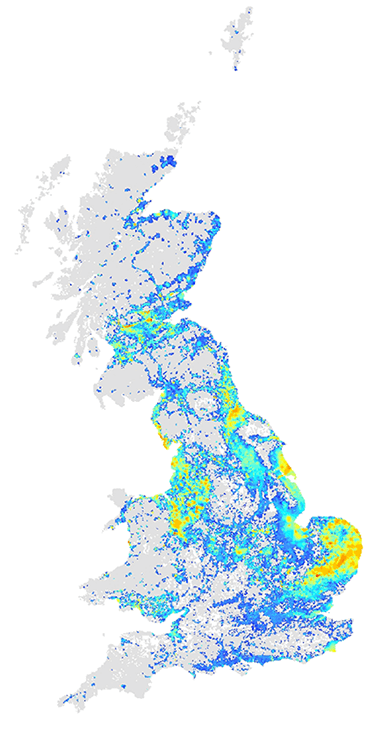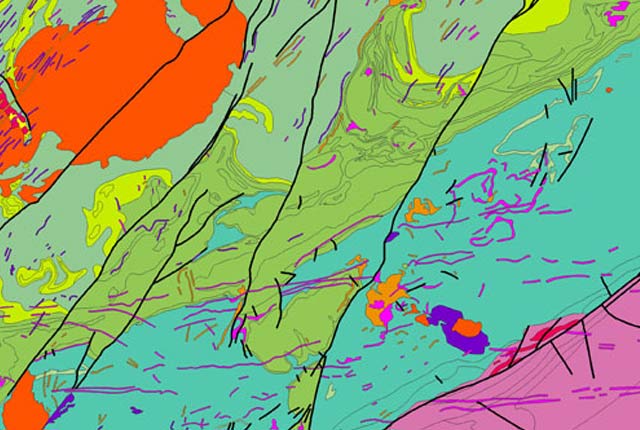Key information
Scale:
1 km hex grid (approx. 1:1 000 000)Coverage:
Great BritainAvailability:
FreeFormat:
GIS polygon data (ESRI)Price:
Free for commercial, research and public use under the Open Government Licence. Please acknowledge the material
Get data
Free access
Our free data is available under the Open Government Licence. Please acknowledge reproduced BGS materials.
Download ESRI dataDownload OGC GeoPackageSupporting documents
Superficial deposits are the youngest geological formations (less than 2.6 million years old). They are largely unconsolidated and cover much of the bedrock of Britain. They generally include sediments deposited during the Pleistocene (Quaternary) glacial episodes, subsequent Holocene rivers, and coastal systems; superficial deposits also include modern, artificial deposits such as mining spoil and road embankments.
The superficial thickness model 1 km hex grid shows the variation of the thickness of superficial (Quaternary age) deposits across Great Britain.
The data is presented as a cellular vector map of interlocking hexagons (side length 1 km; area approximately 2.6 km2) covering the landmass of Great Britain as a regular grid. Each hexagon is attributed with a series of statistics about the thickness of the underlying Quaternary units; additional information relating to the thickness models and the coverage of underpinning data is provided.
The data was derived by spatially summarising the information originally created for the high-resolution superficial thickness model. This data can only be viewed within a GIS as a vector layer of information and is supplied in several common GIS formats.
Download Superficial Deposit Thickness Model hex grid data
You may also be interested in

Superficial thickness model
The superficial thickness model shows the depth of the bedrock surface below unconsolidated deposits






